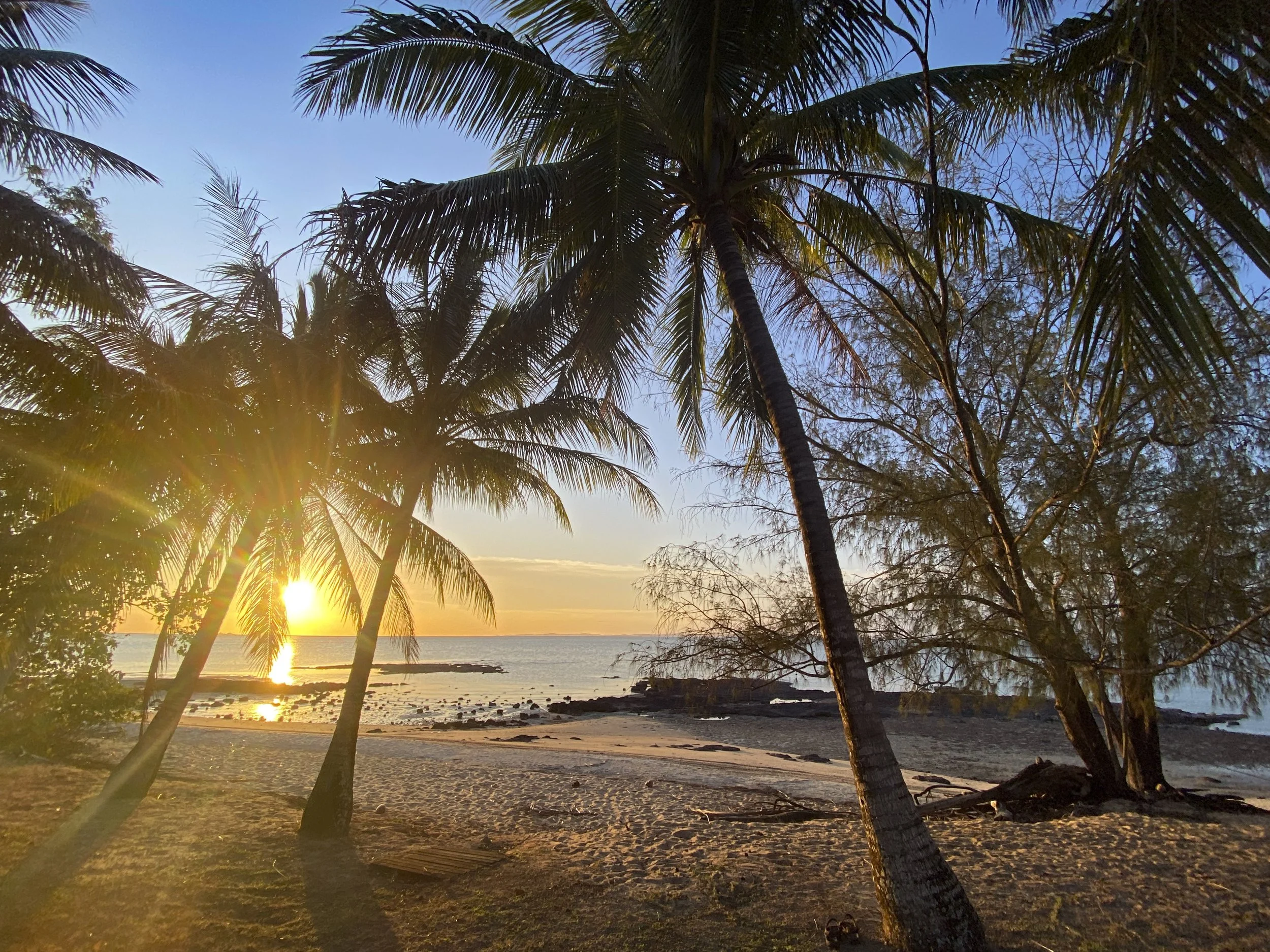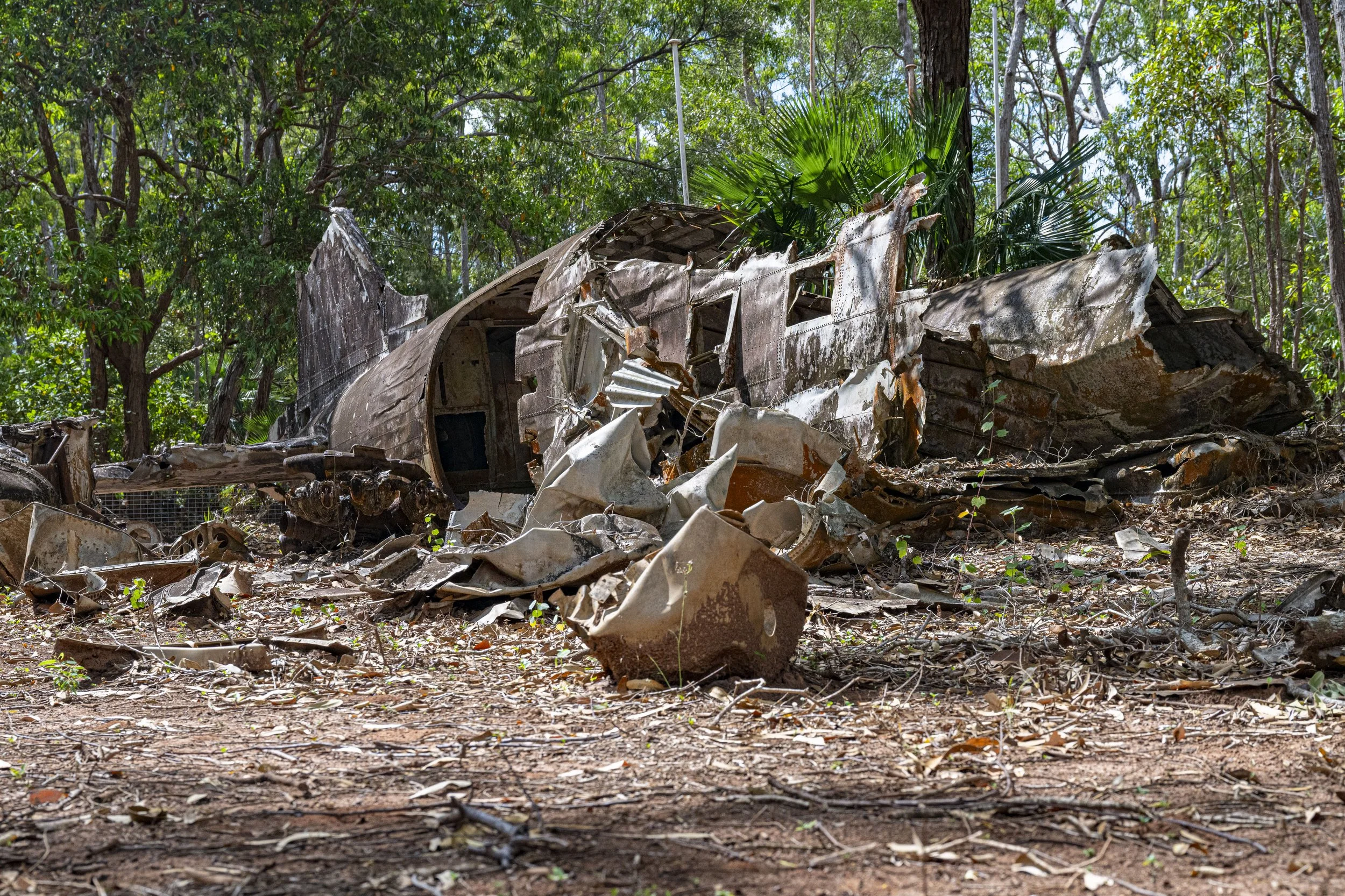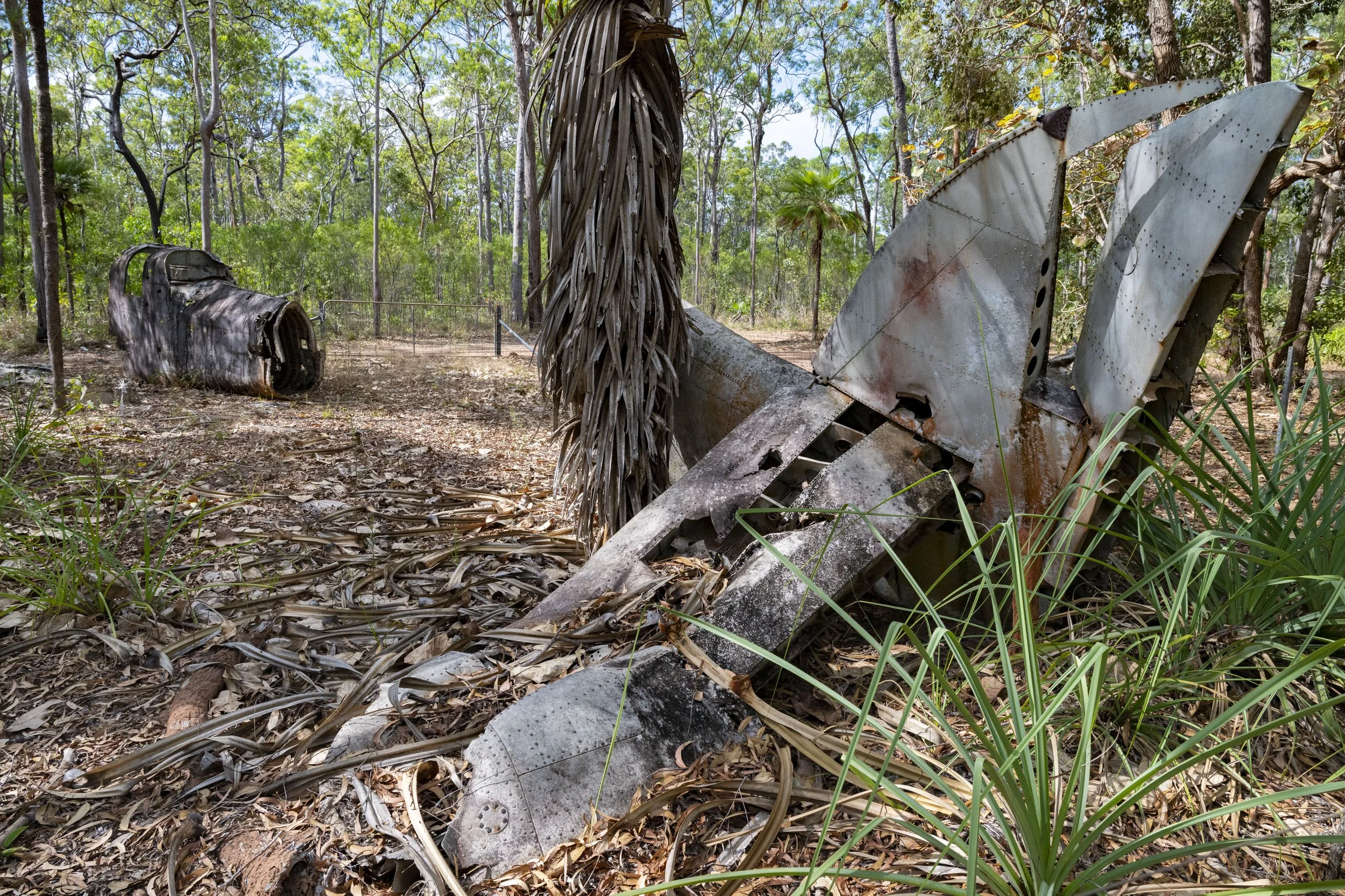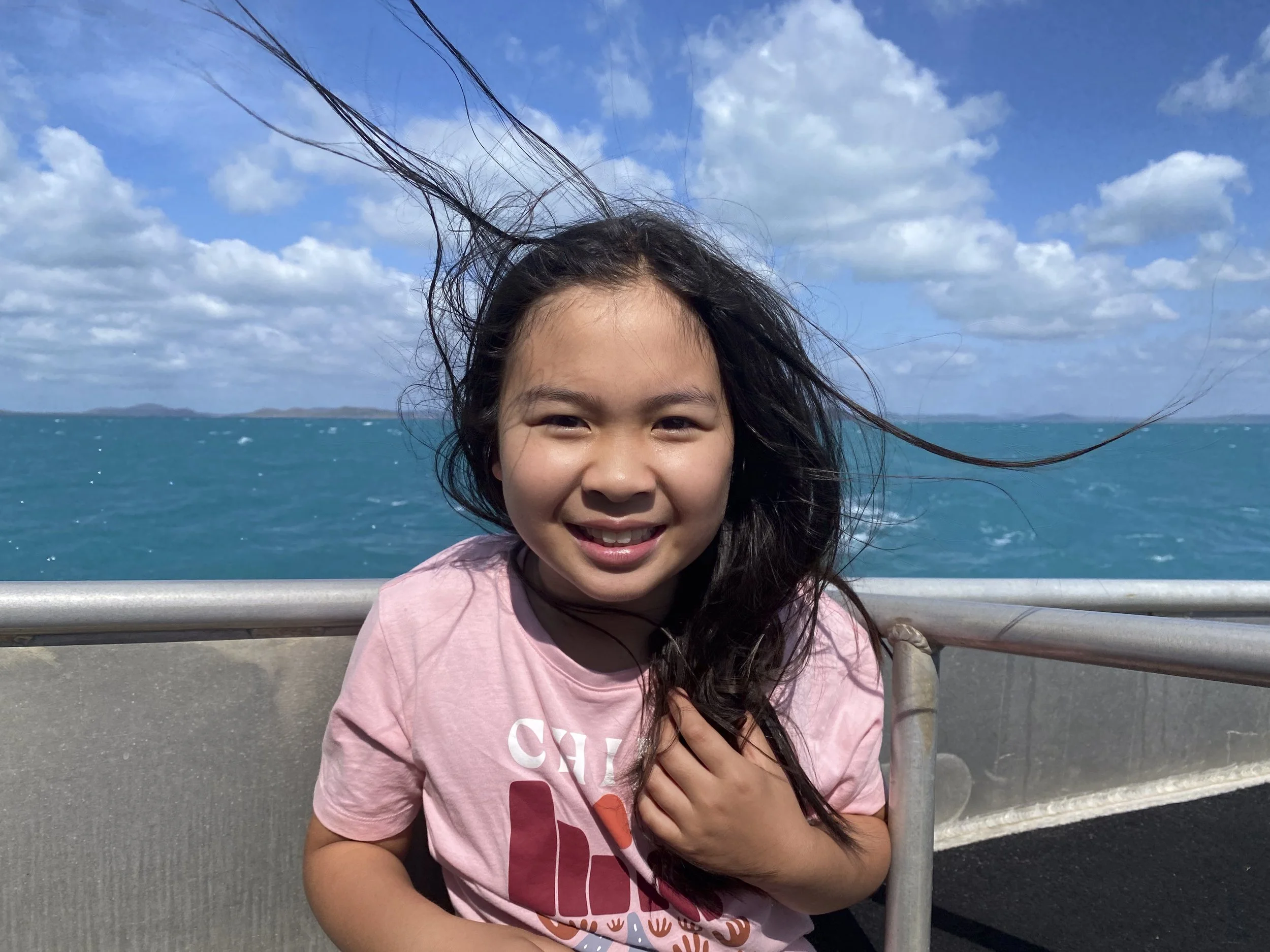16. FNQ and The Tip
We headed east from Burke and Wills’ last camp near Normanton to Cairns. We then drove north to the ‘tip’ of Australia, visiting some highlights of Far North Queensland (FNQ) on the way. Again there was a bit of colonial history as we stayed at Cape Tribulation where Lieutenant James Cook’s ship HMS Endeavour ran aground on the coral and almost sunk. We also visited Cooktown where Cook and his crew came to shore for nearly seven weeks to beach and repair their ship. The road north from Cooktown to the northern most point of Australia is renowned for being very rough. So, we decided to leave our caravan behind to save it being shaken apart. In the end, the road north was in good condition and we had a smooth run to the top.
Undara Volcanic National Park: The caves are known as 'lava tubes' and were formed by the lava flows from many of the nearby volcanoes
Undara Volcanic National Park: Shining the torch down the lava tube cave as we walk along
Undara Volcanic National Park: Detail of the wall
Cape Tribulation: Cape Tribulation is known as the place where the rainforest meets the reef. It was named by James Cook because it is where their ship ran aground on the coral reef and almost sunk. Cook is not the only one who had trouble getting in and out of Cape Tribulation - the road up from Cairns was the most difficult drive of the whole trip. It is only 30 kilometres from the barge across the river to Cape Tribulation, but it took more than an hour to drive. It is very tight and very windy.
Cape Tribulation: Where the rainforest meets the reef
Cape Tribulation: Where the rainforest meets the reef
Cooktown: We liked Cooktown. It is a small and pleasant town north of Cairns named for James Cook due to it being the place he and his crew came ashore to repair their ship
Cooktown: The anchor from HMS Endeavour
Cooktown: There was a gold rush in Palmer River in the 1870s. Cooktown became the gateway to the goldfields. At its peak, there were estimated to be 30,000 people at the goldfields and 4,000 people living in Cooktown (it is now less than 3,000). The Sisters of Mercy order in Ireland sent out five nuns in 1888 to set up a convent and school. Goodness knows how they managed with the massive change from Ireland to the mosquito infested humidity of FNQ. Cooktown suffered a decline and the convent was shut down before WWII. The building was later saved and now houses the Cooktown Museum
Coen: Driving north to the tip we stopped at a couple of different local hotels for the night. This is the Exchange Hotel in the small town of Coen. Someone added an 'S' to the front of the name a long time ago. That's Millie on the left keeping a wary eye on one of the numerous dogs that wander about the town
The Drive North: The drive is a lot of orange dusty roads which are often surrounded by lush trees. You can get lucky if the road has been graded recently and have a smooth run. Or, you can get unlucky and have a very corrugated road. We got lucky
The Drive North: We crossed over the Jardine River on the ferry. They charge $130 just to get across that river and back. That works out at about $30 per minute that you are on the ferry. When you have a monopoly, you can do that
The Drive North: Our car on the Jardine River ferry
The Drive North - Fruitbat Falls: This is a lovely swimming spot on the way north. Unusually for the area, there are no crocodiles in the water. And, as a bonus, the water was a pleasant temperature (so many of the swimming spots have been freezing)
The Drive North - Fruitbat Falls: Enjoying a swim
The Drive North - Fruitbat Falls: Sumy looking after Millie and Justin by making lunch before we leave (the car park filled up - we had got there at a good time to not have too many people)
Seisa: There are several small towns at the top of the Cape York Peninsula. We stayed in a 'donga' at a caravan park in Seisa. The accommodation is basic and overpriced. But, this is right outside the door of our donga and you can't complain about that. The only downside is that you cannot swim in the water due to crocodiles
Siesa: A game of backgammon
Seisa: The sun goes down
The Tip: Walking towards the tip of Australia. The scenery was perfect
The Tip: Walking towards the tip of Australia
The Tip: Standing at the northernmost point of the Australian mainland. Someone decided to shoot some holes in the sign
Cape York - WW2 Plan Wreck: The north of Australia had many airfields during WW2. There are a number of crash sights around the peninsula
Cape York - WW2 Plan Wreck: The tail of the plane is quite far away from the rest of the fuselage (another large part of the plane is out of picture)
Cape York - WW2 Fuel Dump: There are a lot of 44 gallon fuel drums left behind from the war in the bushes
Thursday Island: Thursday Island is off the north coast of Australia. It is a small island with less than 3,000 people. Here we are on the ferry on the way there
Thursday Island: It was windy on the ferry...
Thursday Island: The cemetery is expansive. In this part are the graves of many Japanese people who came to Thursday Isand for the pearling industry
Heading South: We were planning to stay at Lockhart River (east side of Cape York Peninsula) on our way back down. There is one road in and out. The road here is a reasonably steep section coming up out of a river crossing. The truck, with two long trailers, had an engine failure and the rolled back down the hill and ended up across the road. We could not get past in our car. After some time, we decided to leave and give Lockhart River a miss. Maybe its good to leave something for next time...




























